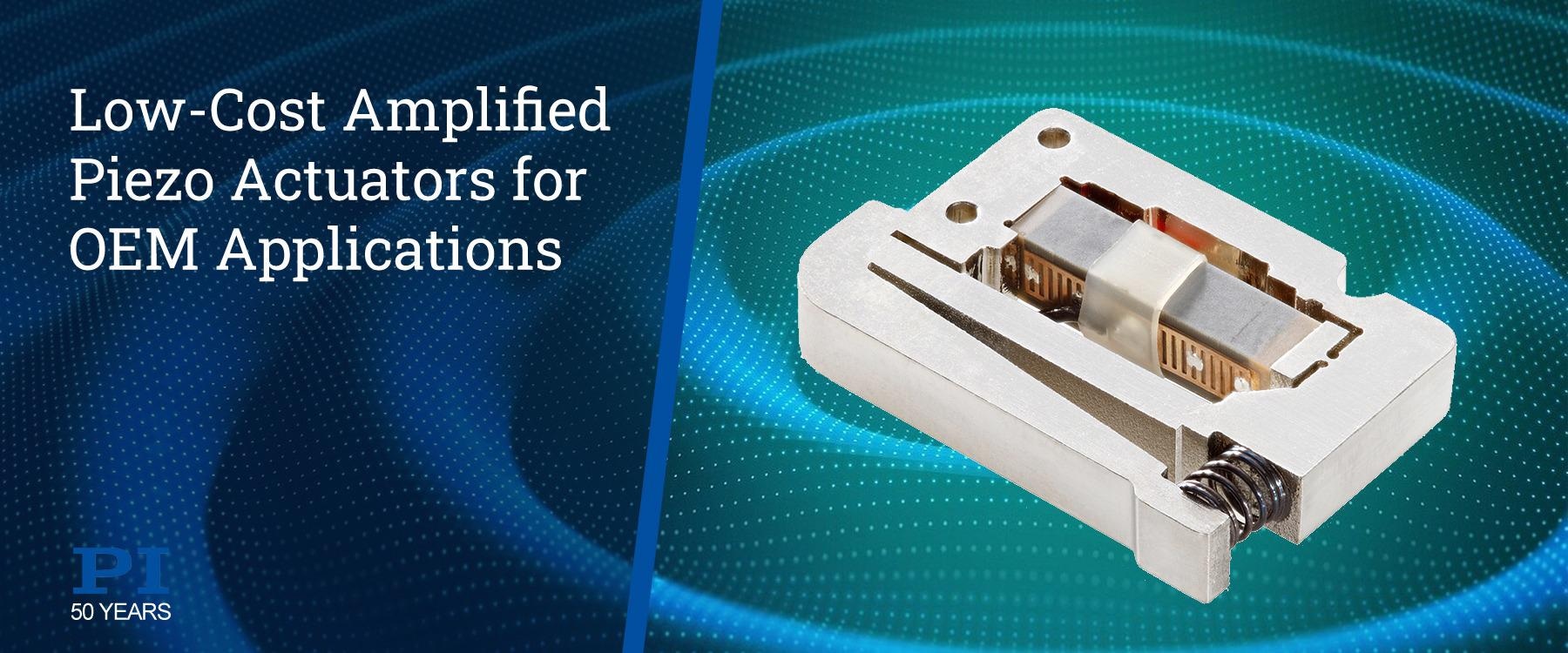Piezo-ceramic motors directly convert electrical energy into mechanical motion. They are energy efficient and provide very fast response and virtually unlimited positional resolution.

Image Credit: PI (Physik Instrumente) LP
Compared to piezo stack actuators, amplified piezo actuators provide extended motion ranges and can be easily integrated in OEM applications such as precision instrumentation, high speed valves, nano-dosing and pumping, optics alignment, nanopositioning, nano-dispensing, biotechnology, microfluidics, medical-devices, and microscopy and life-sciences.
Cost-optimized for large quantities, the lightweight P-604 amplified piezo flexure linear actuator provides a large travel of 300 µm in a small footprint of 13x20 mm, engineered for a long maintenance-free life. Zero-play flexure guides deliver frictionless and ultra-straight motion. At the heart of the motion-amplifying flexure design is a multilayer piezo ceramic element, of the same proprietary construction as the ones used on the Mars rover for their extreme reliability and lifetime beyond 100 billion cycles.
Closed-loop motion amplified piezo actuators with high-stiffness designs allow for high load capacity and insensitivity to shock and vibration. The integrated feedback sensors enable highly linear and repeatable motion when operated with a high performance closed-loop piezo-controller. PI’s patented, ceramic insulated multi-layer PICMA piezoelectric actuators are 100% vacuum compatible and can work in a wide temperature range.
Amplified Piezo Actuators Specifications, Datasheets»
Working with You
PI’s in-house engineered solutions have enabled customers around the world to increase their productivity and technological advantage for 5 decades. With a large basis of proven motion technologies and methodologies, PI is in the position to quickly modify existing designs or provide a fully customized OEM solution to fit the exact requirements of your application from sensors and piezo transducers to microscope nano-focus units, fast photonics alignment systems to multi-axis automation sub-systems.